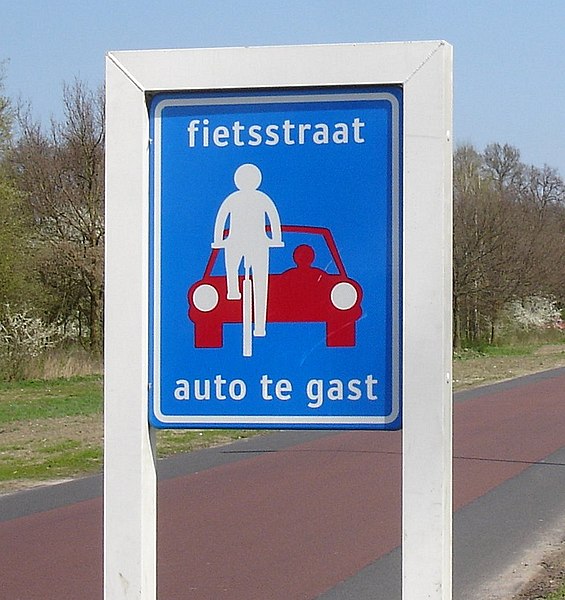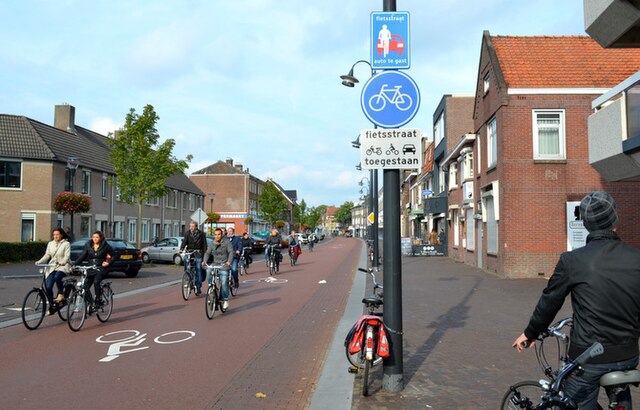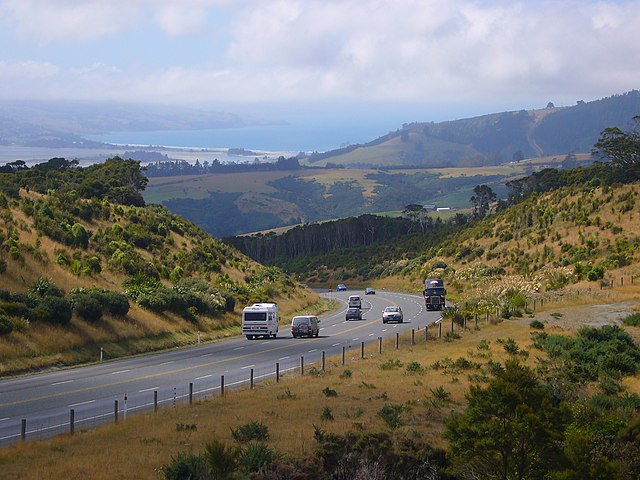The Netherlands has a public road network totaling 139,000 km, one of the densest in the world. Its use has increased since the 1950s and now exceeds 200 billion km traveled per year, three quarters of which is by car, making it among the most intensely used road networks. In 2019, the World Economic Forum ranked the quality of Dutch road infrastructure as the best in Europe and second to Singapore out of 141 countries.
The 1927 Rijkswegenplan was the first new Dutch national highway structure plan in a century.
cyclestreet (fietsstraat) sign (unofficial)
A fietsstraat (bike street) where bicycles are the main form of transport and cars are considered "guests".
Motorway A15 / A16 near Rotterdam
A limited-access road, known by various terms worldwide, including limited-access highway, dual-carriageway, expressway, and partial controlled-access highway, is a highway or arterial road for high-speed traffic which has many or most characteristics of a controlled-access highway, including limited or no access to adjacent property, some degree of separation of opposing traffic flow, use of grade separated interchanges to some extent, prohibition of slow modes of transport, such as bicycles, horse-drawn vehicles or ridden horses, or self-propelled agricultural machines; and very few or no intersecting cross-streets or level crossings. The degree of isolation from local traffic allowed varies between countries and regions. The precise definition of these terms varies by jurisdiction.
The Veterans Memorial Parkway in London, Ontario is a modern at-grade expressway, with intersections
The Dunedin Northern Motorway, a typical non-freeway-type motorway in New Zealand
G50 Huyu Expressway crossing over the Si Du River Bridge in Enshi Prefecture, Hubei, China.
The Mumbai-Pune Expressway as seen from Khandala








